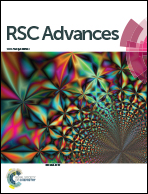Hydrotreatment of model compounds with catalysts of NiW/Al2O3 and NiWP/Al2O3 to simulate low temperature coal tar oil
Abstract
Eight characteristic model compounds were employed as hydrotreatment feedstocks to simulate low temperature coal tar oil. A series of NiW/Al2O3 catalysts with different Ni/W ratio and NiWP/Al2O3 catalysts with different phosphorus content were prepared by incipient wetness co-impregnation. Both catalysts were characterized by N2 adsorption–desorption, X-ray diffraction, HRTEM, H2-TPR, NH3-TPD and FT-IR. The heteroatom removal and polyaromatic hydrogenation conversions were more than 90% over these catalysts. Ni6W20 showed the highest conversion among the NiW/Al2O3 catalysts due to the presence of relatively short, thick slabs when compared to the other Ni/W ratios. Phosphorus was added to adjust the acid concentration of NiW sulfides. The best hydrotreatment performance was seen with the 0.8 wt% phosphorus catalyst, which was attributed to the highest medium strength acid concentration. The results suggested the medium acid on the NiW sulfide was probably the active site for the hydrogenation of the aromatic ring in the coal tar oil hydrotreatment process. The self-prepared catalyst showed higher HDS and HDN activity than a commercial catalyst.



 Please wait while we load your content...
Please wait while we load your content...